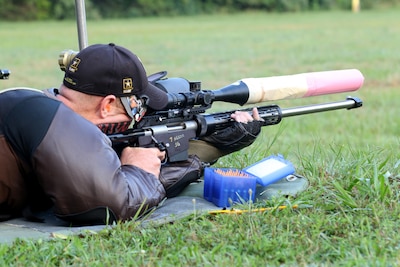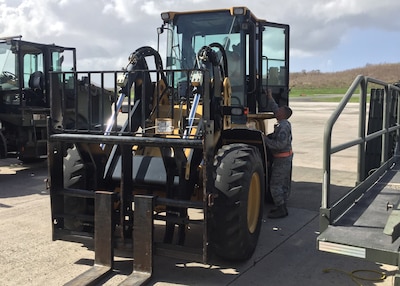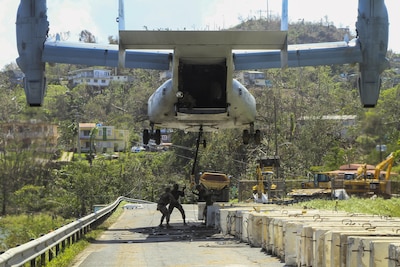By Army Maj.
Michelle Lunato, U.S. Army Marksmanship Unit
FORT BENNING, Ga.,
Oct. 5, 2017 — The definition of success is the accomplishment of one's goals.
For the U.S. Army Marksmanship Unit based here, Sgt. 1st Class Brandon Green
was the embodiment of that definition over the summer.
In less than three
months, the Service Rifle Team soldier claimed 14 individual championship
titles and contributed to six team championship trophy wins. Out of those 20
top finishes, Green broke eight national records -- six individual and two
team.
Though Army
Marksmanship Unit soldiers are known for their success, Green's accomplishments
exceed the "home of champions" moniker, said Army Sgt. 1st Class
Shane Barnhart, a shooter/instructor on the Service Rifle Team and Ashley,
Ohio, native.
"He shot amazing
this summer -- probably the best anyone has ever performed in the history of
the USAMU Service Rifle Team, … at least since I've have been here the last 18
years," Barnhart said.
Green, from
Bogalusa, Louisiana, has been a winning member of the team since 2004. He has
repeatedly won notable honors such as three Interservice Overall Champion
titles, five Interservice Long-Range Champion titles and two National
High-Power Champion titles. Even with all this success, Green's competitive
nature forces him to consistently find ways to improve upon his skills. This
year, he said, his adjustments paid big dividends.
Clear Plan of Action
"I changed my
mental game up a little bit this year, kind of approaching each and every shot
with a clear plan of action," he said. "And, it's really paid
off."
This change involved
taking notes on how he felt, what results he achieved and what techniques he
used in various situations, Green explained. As he prepared for the summer
series of competitions, he said, referred back to those notes and adjusted
again, and then again. "When I got off track, I went back and read my
notes and really got back into it. I focused on the shot and the rifle, not the
outcome," he added. "I think that's what really helped me out this
year."
Green said keeping a
clear focus can be difficult, but it's critical for competitive shooters
looking for an edge.
"Anytime you
step onto a rifle range, you are going to focus on something," he said.
"You are either going to worry about your gear, the weather, or this or
that. I tried to take myself out of that completely. I didn't worry about
anything. I simply focused on breaking the best shots I could -- each and every
shot. That was my main focus."
Trust Breeds Success
Staying focused on
one shot at a time allowed the Service Rifle Team soldier to trust his gear,
trust his experience and trust his skill, and that trust freed him up for even
more success.
"When you take
away a lot of the worries that you have, it really opens your path up to do the
right thing at the right time."
With advanced
technology improving the gear and the rules changing to allow optics in some
matches, finding that self-control has become the key to continued success in
the high-power sport, Green said. "We have the best equipment, best
rifles, best ammunition, and best glass (optics)," he added. "We have
all the equipment. So the shooter is the weak link."
Coping with that
reality and finding out what it takes to continuously improve is what the
soldiers do at USAMU. It is also what serious high-power sportsmen need to do,
Green said after competing in the 56th Annual Interservice Championships in
Quantico, Virginia, where he claimed his fourth Interservice Overall Champion
title. His winning score of 998-52X broke the 1994 record of 995-50X that was
set by retired Marine Corps Master Sgt. Don Heuman, who later became a coach
for the USAMU Service Rifle Team.
Staying in the Game
"The equipment
is very, very good these days, so it's every man for himself up there,"
Green said. "You are shoulder to shoulder with the best there are in your
particular discipline. So it's all about how you can drive the rifle and
mentally stay in the game."
For those who debate
the recent use of optics in some competitive matches, the 13-year-veteran of
the Service Rifle Team agrees that it is "a different game now."
"It takes a lot
more to break good shots with iron sights," Green said. "It just
does. There is no question about it. But optics are the new norm. They are not
going away."
The use of optics
though, is not a bad thing to Green. He explained that iron sights lead to more
eye fatigue, which caused a number of people to leave the sport. Allowing
optics into some of the matches brings those people back, he said.
"It brought
back people who just couldn't see the sights anymore," Green said.
"It opened it back up for those guys."
Handling the
Pressure
When everyone has
the same gear, the bottom line still comes down to the shooter and the
shooter's skills. And in the end, the best shooter is the one who hits the most
targets, said Green, who just spent the summer competing in several matches
against hundreds of civilians, veterans and other current service members
across the Department of Defense.
Being a soldier
definitely aided with the knowing-what-to-do and how-to-handle-pressure
elements of competition, because through all the training, you learn things
about yourself when you develop as a soldier, Green said. "It gives you a
whole different perspective on the things you are doing," he added.
"It really helps narrow your intent and helps you focus on what matters."
Discipline and
Structure
The discipline and
structure the Army provides makes the team stronger and communicate better,
said Green, who occasionally shoots with various civilian teams for fun.
"Just being in the Army in general has made me a much better shooter for
sure, and I feel very fortunate," he said. "I would have never
imagined that I could do something I love so much for a living, especially for
the military."
USAMU soldiers train
for hours and focus on little details. All that time together makes the team a
family, and when it comes to family, team matches are even more important,
Green said. "You don't want to let anybody down," he added. "You
don't want to let your teammates down for sure."
But that doesn't
mean the soldiers are not competitive with each other. They all want to win.
That is what they train for, after all.
"All of us are
competitive," Green said. "Everyone out here on this firing line
today is a competitive person, whether or not they want to admit it."
That internal
competition makes the USAMU soldiers better as they vie for top honors. Then
after the season, they compile their notes as a team in efforts to improve
marksmanship techniques across the Army. While an improved force is a long-term
goal of the USAMU, the short-term goal is to win competitions. And with a team
of competitive experts on the range, Green said his adjustments to improve can
never stop.
"You can't let
your guard down for a second," he said. "They will pass you up."










